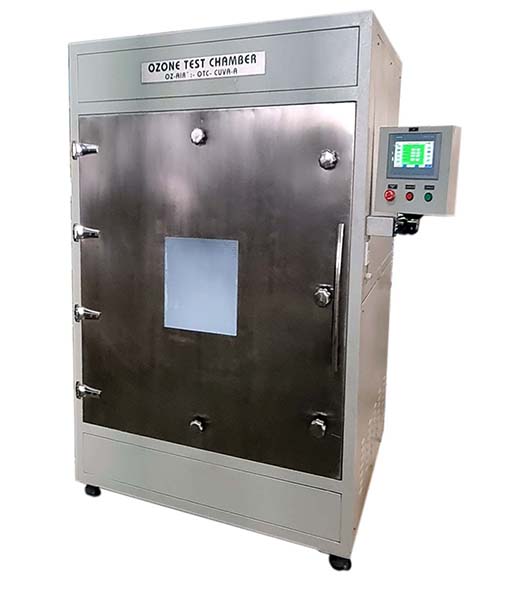
The Ozone Test Chamber Creative OZ AIR is an advanced gadget meant only for companies, which need to test the material's strength against ozone degradation under controlled conditions. This facility in sophisticated equipment and testing helps automobile, rubber industries, and material science industries mimic laboratory settings in their shops by simulating the actual exposure of their products to ozone in the environment. Thus, this chamber ensures the quality and compliance of products with industry norms.
The Ozone Test Chamber comes with high ozone concentration control as well as temperature and humidity control. It allows businesses to test the conditions under which materials may degrade with ozone. Ozone resistance and durability of products, particularly rubber, polymers, and elastomers, are tested for conformity to industry specifications.
In some industries, where ozone exposure can result in the failure of the product, a specific product fault can be a potential safety hazard or an expensive recall. The Ozone Test Chamber would be required in this case to confirm the material's ozone performance over time. It ensures that businesses maintain their product quality while still adhering to strict industry standards for ozone resistance.
The Ozone Test Chamber is used for any type and size of material product. This option makes it a universal tool for different industrial applications from testing small samples up to large components. Testing Options Flexible testing options are provided by this chamber regarding product sizes for various industries, like parts of vehicles, cables, tires, and seals.
Ozone degradation in tires or other rubber parts of cars and air vehicles causes damage, including seals, hoses, and gaskets. The Ozone Test Chamber ensures that such parts are ozone-resistant and that the associated products meet safety and quality requirements for critical applications.
The Ozone Test Chamber provides assurance to rubber and polymer manufacturers that the materials do not degrade by the abundance of ozone, thus ensuring that the final product is long-lasting and materials are not degraded.
In an R&D lab, the Ozone Test Chamber is indispensable for testing new materials exposed to ozone. Business innovates and develops products against strict durability and environmental standards.
The Ozone Test Chamber by Creative OZ AIR is a primary consideration for companies that want to be able to guarantee that their products will last and are resistant to ozone. What makes this chamber unique is that it can replicate perfect testing conditions while allowing for varying types of materials. This way, the chamber ensures that businesses maintain product quality, decrease material degradation, and meet regulatory standards. With regard to industries that are experiencing issues because of ozone exposure, this facility provides them with a sound and efficient solution in terms of mitigating these problems in the long term.
.jpg)

An ozone test chamber is a controlled environment used to test materials, products, or equipment for their resistance to ozone exposure. It allows researchers to simulate various ozone concentrations, temperatures, humidity levels, and exposure durations to assess durability.
Ozone can cause degradation, cracking, discoloration, or other forms of damage to materials over time. Ozone testing helps industries understand how materials will perform when exposed to ozone, enabling them to develop more durable products and ensure quality control.
Industries such as automotive, aerospace, electronics, textiles, and rubber manufacturing utilize ozone test chambers to evaluate the durability of materials used in their products.
Ozone concentration, temperature, humidity, exposure duration, and airflow are some of the key factors that can be controlled in an ozone test chamber to simulate different environmental conditions.
Samples are typically prepared according to specific standards or protocols established by industry organizations or regulatory agencies. This may involve cutting samples to size, conditioning them to specific environmental conditions, and mounting or securing them in the test chamber.
There are various testing standards and protocols established by organizations such as ASTM International, International Organization for Standardization (ISO), and others. These standards outline procedures for ozone testing, including exposure conditions, sample preparation, and performance evaluation criteria.
Common test methods include static or dynamic exposure to ozone, where samples are either exposed to a constant ozone concentration or subjected to cyclic ozone exposure and recovery periods to simulate real-world conditions.
Data on factors such as material appearance, physical properties, and performance characteristics are collected before, during, and after exposure to assess the effects of ozone exposure. Analytical techniques such as visual inspection, measurements, and testing may be employed to evaluate sample performance.
Ozone testing helps identify materials that are resistant to ozone degradation, leading to the development of more durable products, improved quality control, and enhanced reliability in various industries.
Depending on the industry and application, there may be regulations or industry standards that specify ozone testing requirements for certain products or materials. Adherence to these regulations ensures compliance with safety, performance, and environmental standards.